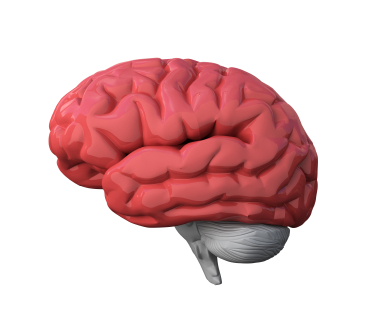Meditation Improves Mood and White Matter Integrity
New research shows that regular meditation in the form of mindfulness training improves both mood and measures of white matter (axon tract) integrity and plasticity in the anterior cingulate cortex (a key node in the brain network modulating self-regulation).
This research by Tang et al. published in the Proceedings of the National Academy of Sciences in 2012 was a continuation of the same research group’s investigation of integrative mind-body training (IMBT), a type of mindfulness training that incorporates increased awareness of body, breathing, and attention to external instructions meant to induce a state of balanced relaxation and focused attention. In a previous Tang et al. study comparing participants who received IMBT training with a control group who spent the same amount of time doing relaxation training, the participants who practiced IMBT for five days (20 minutes/day) had better scores on measures of attention, anxiety, depression, anger, fatigue, and energy. In another study the researchers found that four weeks of IMBT (30 minutes/day) increased fractional anisotrophy (FA) in white matter areas involving the anterior cingulate cortex, while four weeks of relaxation training did not bring about any effect on white matter. Decrease in FA is a part of aging. The four weeks of IMBT also decreased axial and radial diffusivity, suggesting better alignment of axons along white matter tracts.
In the most recent study, two weeks of IMBT (30 minutes/day) produced a reduction in axial diffusivity, but not effects on fractional anisotrophy or radial diffusivity, suggesting that the reduced axial diffusivity leads to the other changes seen with longer IMBT.
Editor’s Note: In those with unresolved problems with anxiety and depression, regular 20-30 minutes/day mindfulness practice may have beneficial effects not only on mood, but also on central nervous system structures. Mindfulness training involves focused attention on sequentially different parts of the body leading to exclusive focus on the physical aspects of breathing in and out. Intruding thoughts are recognized, but let go as trivial, passing interruptions, and focus is returned to the body and breathing. The aim is to clear the mind of its usual ideas, thoughts, and worries by continually refocusing on breathing. It takes practice to achieve, but regular mindfulness training can be a helpful addition to pharmaco- and psychotherapy.
It is also noteworthy that mindfulness training is one of the processes that helps elongate the ends of each strand of DNA, called telomeres. Telomeres shorten with aging, stress, and episodes of depression, and short telomeres lead to a variety of adverse medical consequences.
Adolescent Obesity Connected to Brain Impairment
As childhood obesity has increased over the past several decades, the metabolic syndrome has also become more prevalent among children and adolescents. The metabolic syndrome consists of five measures related to obesity: elevations in fasting glucose levels or insulin resistance, a high proportion of LDL (“bad” cholesterol) to HDL (“good” cholesterol), elevated triglycerides, hypertension, and abdominal obesity or high waist circumference. A patient with three of these abnormalities would be diagnosed with the metabolic syndrome.
In adults, the metabolic syndrome has been associated with neurocognitive impairments. Researchers decided to look at adolescents with the metabolic syndrome to determine whether these brain effects are a result of long-term metabolic impairment or whether they can take place after short-term periods of poor metabolism as well. In a study published by Yau et al. in the journal Pediatrics last year, 49 adolescents with the metabolic syndrome were compared to 62 adolescents without the syndrome who had been matched for similar age, socioeconomic status, school grade, gender, and ethnicity.
The adolescents with the metabolic syndrome had lower scores on tests of math, spelling, attention, and mental flexibility, as well as a trend for lower overall intelligence. In brain measures such as hippocampal volume, amount of brain cerebrospinal fluid, and microstructural integrity in white matter tracts, the seriousness of the metabolic syndrome correlated with the level of abnormality on these measures.
Editor’s Note: It seems as though even short-term problems with metabolism can lead to brain impairments like lower cognitive performance and decreased integrity of brain structures. These effects are even seen before vascular disease and type 2 diabetes are manifest.
It is doubly important, in terms of both cardiovascular and neurobiological risks, to look out for one’s medical and psychiatric health. Reducing the abnormal components of the metabolic syndrome should produce benefits for both the cardiovascular system and the central nervous system.
Almost 40% of patients with bipolar illness in the US have the metabolic syndrome, so considerable effort will be required to improve this public health crisis.
White Matter Abnormalities in the Brain Predict Onset of Psychosis
 At the 2012 meeting of the American Academy of Child and Adolescent Psychiatry (AACAP), Carrie E. Bearden presented data from a study that predicted conversion to psychosis in at-risk youth (those who have prodromal symptoms or a particular genetic mutation that leads to psychosis) by observing white matter abnormalities.
At the 2012 meeting of the American Academy of Child and Adolescent Psychiatry (AACAP), Carrie E. Bearden presented data from a study that predicted conversion to psychosis in at-risk youth (those who have prodromal symptoms or a particular genetic mutation that leads to psychosis) by observing white matter abnormalities.
Bearden found that the degree of white matter abnormality seen during magnetic resonance imaging (MRI) was proportional to the degree of cognitive deficit in patients who subsequently developed a first episode of psychosis. The white matter abnormalities were seen particularly in the superior longitudinal fasciculus (SLF) and were associated with increased severity of symptomatology. The overall degree of white matter alteration was also significantly related to clinical outcome 15 months later.
Editor’s Note: The SLF is a major neuronal conduit between prefrontal cortical systems, which are responsible for cognition and planning, and the parietal cortex, which is responsible for spatial abilities. Disruption of this fiber track has been related to difficulties in social cognition and “theory of mind” concepts, like inferring what others might be thinking.
The Impact of Obesity on Brain and Behavior
In an abstract presented at the 5th Biennial Conference of the International Society for Bipolar Disorders, K. Sim and colleagues discussed the impact of increased body mass index on the integrity of white matter in the brain during a first episode of mania. The researchers found significant abnormalities in white matter integrity in the temporal pole and occipital brain regions in overweight and obese patients compared to patients of normal weight. These data highlight the need to clarify the neural mechanisms that link obesity and poorer functional outcomes in bipolar disorder.
Other investigators have reported that bipolar patients with obesity have a less robust response to naturalistic treatment compared to those of normal weight. At least one study suggested that patients with overweight and obesity experience more cognitive difficulties.
Editor’s Note: The pathophysiological mechanisms involved in the relationship between weight and brain function are not yet clear, although one possibility is that in obese patients, some fat cells in the abdominal area become too big to survive and are scavenged by other cytokine-producing cells. These inflammatory cytokines are then able to cross the blood-brain barrier, enter the brain, and affect neuronal functioning. Whether a mechanism like this is at play in relation to these particular findings remains for further investigation.
Nonetheless, these data suggest the importance of good diet, exercise, and other means of maintaining a good body weight in order to attempt to avoid some of the adverse associations of obesity with deficits in cognition, white matter integrity, and treatment outcome.




